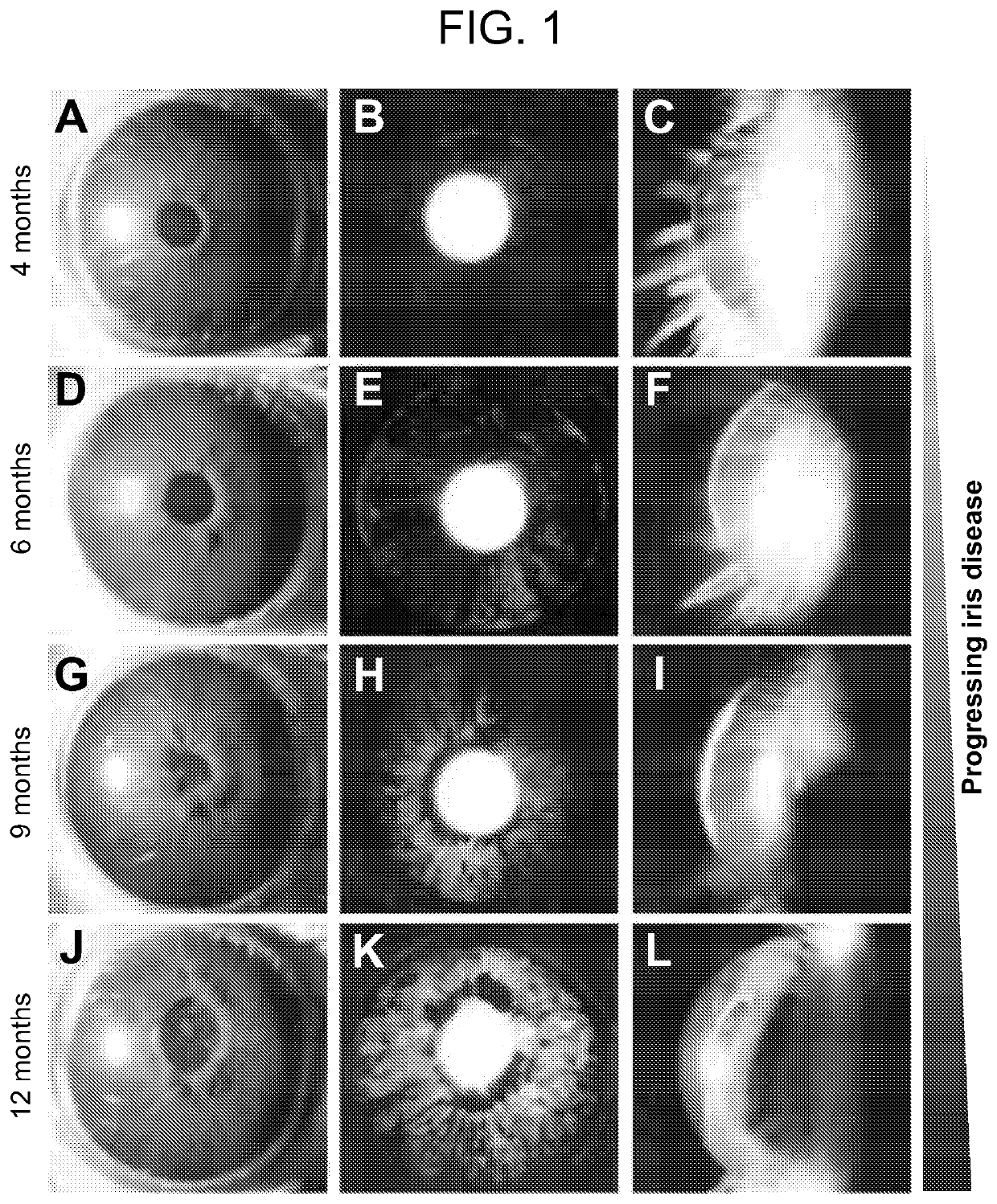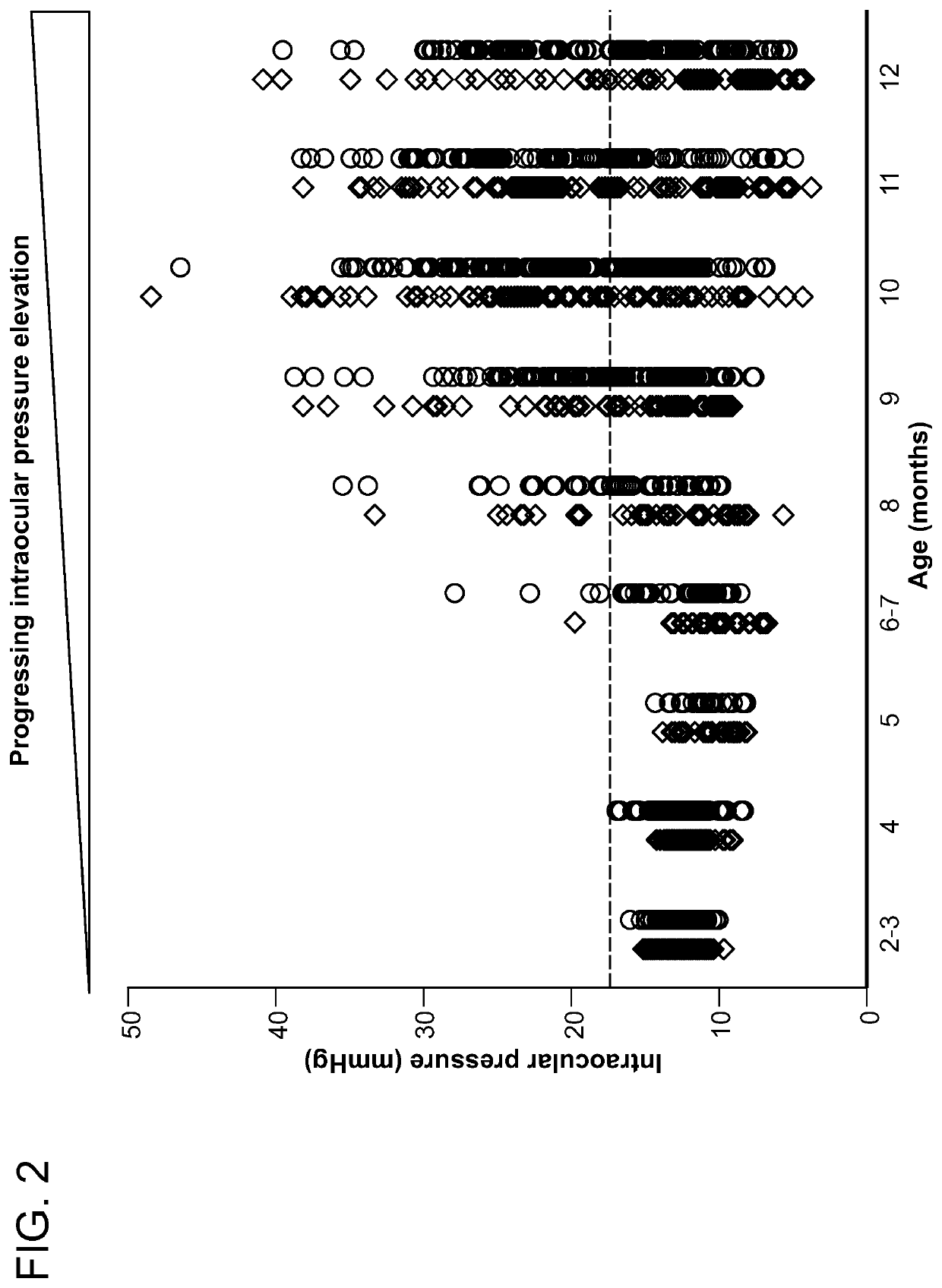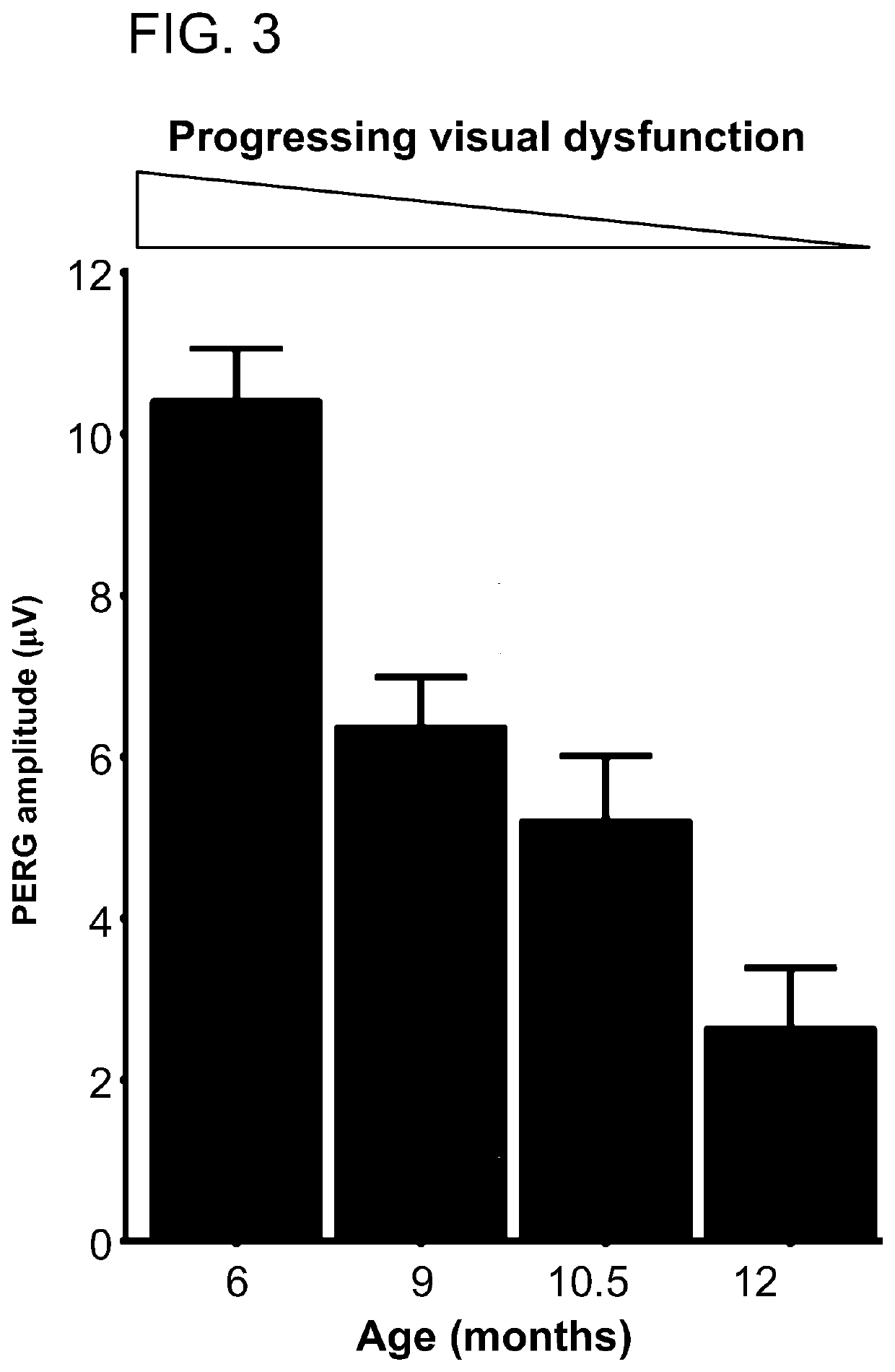Fat droplets in retina and optic nerve as a diagnostic marker for neurodegeneration and glaucoma in humans
a technology of retinal and optic nerve, which is applied in the field of fat droplets in retina and optic nerve as a diagnostic marker for neurodegeneration and glaucoma in humans, can solve the problems of inability to distinguish these two groups of patients, lack of reliable predictors of iop, and limited diagnostic value of methods, so as to avoid unnecessary medication and improve focus
- Summary
- Abstract
- Description
- Claims
- Application Information
AI Technical Summary
Benefits of technology
Problems solved by technology
Method used
Image
Examples
examples
[0215]The present invention is further illustrated by the following examples and results, and is not to be limited in scope by the specific embodiments disclosed. Those skilled in the art will know, or be able to ascertain using no more than routine experimentation, many equivalents to the specific embodiments of the invention described herein.
Example 1 DBA / 2J Mice Have a Progressive Iris Disease that Closely Resembles Human Pigmentary Dispersion
[0216]The DBA / 2J (D2) mouse displays many of the hallmark features of human glaucoma. In the D2 mouse, mutations in two genes (GpnmbR150X and Tyrp1b) cause a front-of-the-eye disease that closely resembles human pigmentary dispersion and iris atrophy disease, which cause glaucoma. In the eyes of D2 mice, dispersed iris pigments block channels known as trabecular meshwork in the anterior chamber of the eyes. The trabecular meshwork is responsible for the normal homeostasis of aqueous humor production and outflow. As a consequence of its block...
example 2 progressive
Iris Disease Leads to Increased Intraocular Pressure in DBA / 2J Eyes
[0221]Following the onset of iris disease around 6 months of age, intraocular pressure began to increase (FIG. 2). A typical “normal” IOP in a D2 mouse eye is ˜13 mmHg, which increases progressively from 6 to 12 months, to values that can typically exceed 20 mmHg. By 9 months of age, IOP was / had been elevated in the majority of the eyes of the D2 mice. IOP increases in D2 eyes were age-related and asynchronous, as well as being highly variable. In our colony, females tend to have higher / early onsets of elevated IOP (FIG. 2).
example 3
Eyes of DBA / 2J Mice Have Progressive Visual Dysfunction as Assessed by Pattern Electroretinography (PERG)
[0222]The retinal ganglion cells (RGCs) are the output neuron of the retina, and their axons make up the optic nerve. Retinal ganglion cells are specifically affected during periods of intraocular pressure that manifests as visual dysfunction prior to gross histological defects, including retinal ganglion cell loss and degeneration of the optic nerve).
[0223]In this example, we used pattern electroretinography (PERG) to measure retinal ganglion cell health in order to detect decreases in visual function prior to degeneration of the optic nerve. PERG assessment of D2 eyes (FIG. 3) demonstrated a progressive loss of visual function that is significant from 9 months of age, which is the time when the majority of the D2 mice eyes had / have had elevated IOP, but is prior to any retinal ganglion cell loss or axon degeneration in the optic nerve. As is shown in FIG. 3, by 12 months of age...
PUM
 Login to View More
Login to View More Abstract
Description
Claims
Application Information
 Login to View More
Login to View More - R&D
- Intellectual Property
- Life Sciences
- Materials
- Tech Scout
- Unparalleled Data Quality
- Higher Quality Content
- 60% Fewer Hallucinations
Browse by: Latest US Patents, China's latest patents, Technical Efficacy Thesaurus, Application Domain, Technology Topic, Popular Technical Reports.
© 2025 PatSnap. All rights reserved.Legal|Privacy policy|Modern Slavery Act Transparency Statement|Sitemap|About US| Contact US: help@patsnap.com



